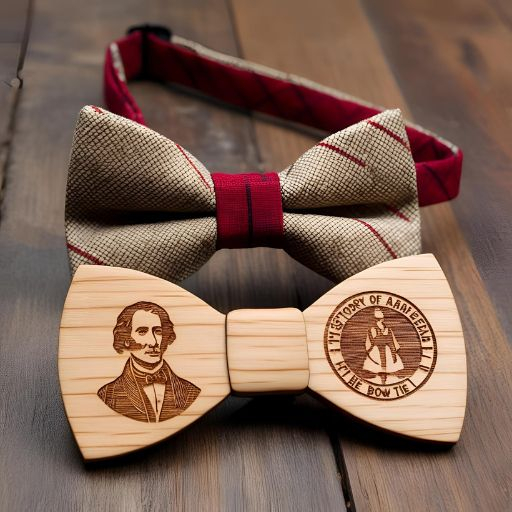
The History of the Bow Tie: From Its Origins to Modern Wooden Elegance
nœud papillon en bois
(481) (0)
The bow tie is a timeless accessory that has transcended eras with style. Initially a symbol of distinction and refinement, it has evolved to adapt to modern trends. Today, it reinvents itself in wood, offering an original and eco-friendly alternative. Let’s dive into the fascinating history of the bow tie, from its origins to its contemporary wooden incarnation.
The Origins of the Bow Tie: A Military Inspiration
From Croatian Mercenaries’ Scarves to Aristocratic Salons
The history of the bow tie dates back to the 17th century. At the time, Croatian mercenaries enlisted in the French army wore a knotted scarf around their necks to keep their shirts closed. This distinctive accessory caught the attention of the French nobility, who adopted this style under the name "cravate", in reference to the Croats.
The Rise of the Bow Tie in the 19th Century
Over the centuries, the cravat evolved into various forms. In the 19th century, the bow tie as we know it today emerged, notably influenced by Beau Brummell, a British dandy who revolutionized men's fashion with refined outfits and sophisticated accessories. During this era, the bow tie became a staple of social events and formal gatherings.
The Bow Tie Through the Ages: From Aristocracy to Modern Style
A Symbol of Chic and Elegance in the 20th Century
At the beginning of the 20th century, the bow tie became a key element of the male wardrobe. Worn by intellectuals, artists, and businessmen, it symbolized a sophisticated style. It also became the favorite accessory of cinema and music legends like Charlie Chaplin and Frank Sinatra.
From the 1950s to Today: Between Tradition and Modernity
While the 1950s and 1960s saw the rise of the necktie at the expense of the bow tie, it never disappeared completely. It remained the preferred choice for formal occasions such as weddings, galas, and official ceremonies. From the 2010s onward, the bow tie made a strong comeback in more modern and creative variations—most notably in wood.
The Wooden Bow Tie: A Revolution in Men's Fashion
Why Wood? An Eco-Friendly and Elegant Alternative
With growing environmental awareness, men’s fashion has shifted toward more sustainable alternatives. The wooden bow tie has emerged as a chic yet ethical solution. Crafted from wood sourced from sustainably managed forests, it allows men to express their style while reducing their environmental footprint.
An Artisan Accessory That Can Be Personalized
Unlike fabric bow ties, wooden bow ties are often handcrafted, giving them a unique and authentic touch. Thanks to laser engraving techniques, they can be customized with initials, patterns, or even special messages, making them an ideal accessory for weddings and special events.
How to Wear a Wooden Bow Tie?
The wooden bow tie suits various outfits and occasions:
- With an elegant suit for a wedding or gala.
- With a shirt and suspenders for a boho-chic look.
- With a blazer and jeans for a casual yet modern appearance.
The Wooden Bow Tie: The Future of Men's Elegance?
Far from being just a passing trend, the wooden bow tie represents a true revolution in men's fashion. It blends tradition with modernity, offering the perfect balance between classic elegance and eco-conscious commitment.
Whether you’re a fashion enthusiast or simply looking for an original accessory to mark a special occasion, the wooden bow tie is a bold choice that never goes unnoticed. So, are you ready to embrace this modern take on timeless sophistication?
(481) (0)

 Whatsapp
Whatsapp


